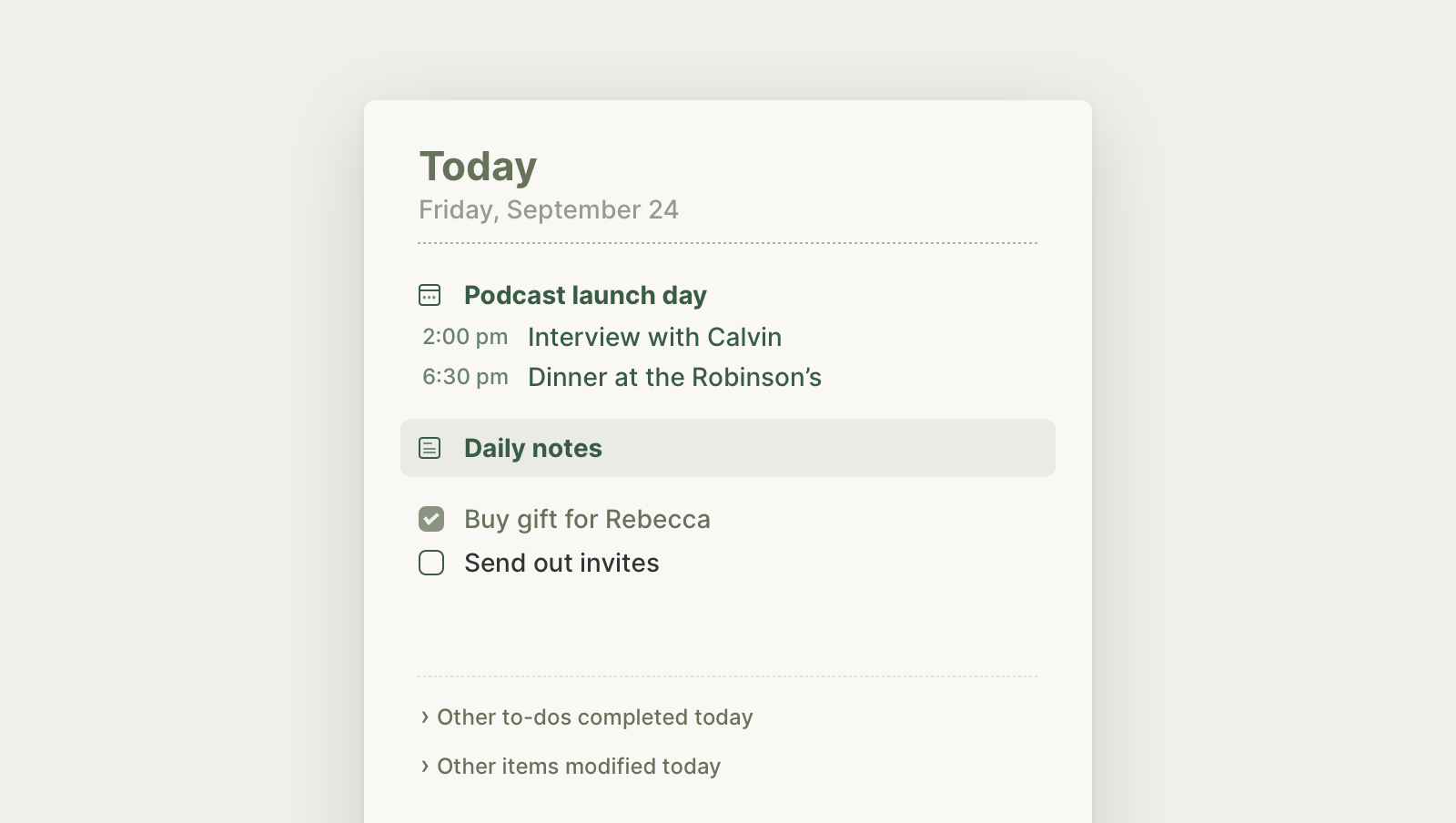Calendar views
In the operating system of the future, flexibility in putting your things exactly where they ought to live would be the new normal. Every item can be a container for references to other items, as we saw in LN 003.
If you want to add a note and some to-dos to an email, or to an event, you can. And if you want to add the same note and to-dos into a project of yours, you can.
But what about putting items onto dates in my calendar?
In LN 003, we saw how I might add some tasks to a date. In LN 012, we saw that I might create a note that is referenced from a project as well as a date.
Let’s explore what that might look like from the date views.
Much of this thinking comes from my work on Symphonies Planner, a digital planner that lets you puts tasks, notes, and events onto dates.
Here are some of its calendar views:
You can imagine how our operating system of the future might make similar views available, where each date is a container for references to any other items we’d like.
Consider the view for one day:

People who prefer to timeblock might intermingle their tasks and events, but I tend to keep the two separate, as seen here.
Our day views can even surface the items we worked on in that day. For example, we might be able to pull up all tasks we completed that day, even if those tasks were not explicitly placed in the date. In this way, the system can more broadly generate daily summaries or agendas for dates in the past or future. We’ll dive more into this in the next lab note.
For some years, my wife and I traveled in an RV full-time, exploring and working from the various cities and parks that popped up on our path. When we are traveling around, we like to mark where we were each day to remember later and to build a travel map at the end of the year.
It’s straightforward to consider a programmable environment in this OS that would let me grab all of the locations I marked for one year, sorted by date, and plot them in a map via a map service’s API. Automating tasks like these would let me generate more of them; the only reason why I make one per year is because of the time it takes. What if I could call up such a map by month, region, etc., and have it generated on the fly?
What would you build if you could write a simple script that fetches all items of a certain type that have been added to dates in your system? This line of thinking can be taken in lots of directions, particularly when given the flexibility of representing and connecting our items as seen in these Lab Notes so far.
References or transclusions might be how we priamrily use our things and interact with our growing personal computing graph in the future.
The date is one specific type of reference container that can extend deeply into our operating system to execute on some concepts that I’ve wanted to see in operating systems for a long time. More on this in the coming lab notes!
Something spark a thought? Email me, or come chat on Bluesky, on Mastodon, or on Twitter.